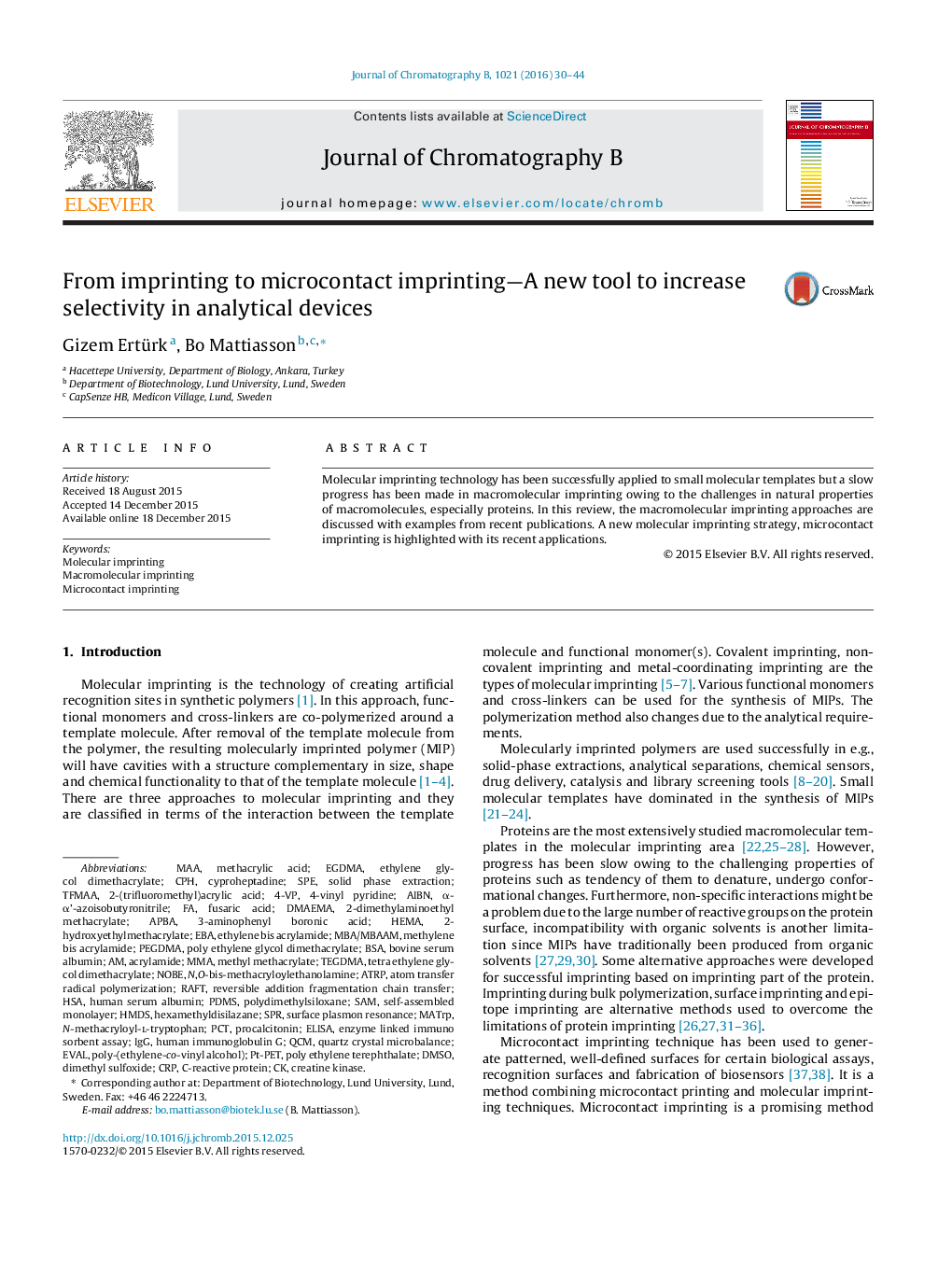| Article ID | Journal | Published Year | Pages | File Type |
|---|---|---|---|---|
| 1211932 | Journal of Chromatography B | 2016 | 15 Pages |
•Microcontact imprinting makes it possible to create selective affinity binding surfaces•The microcontact MIPs are suitable for binding proteins•A higher selectivity was obtained as compared to that of commercial antibodies•A high stability of the microcontact imprinted surfaces was demonstrated.•Microcontact imprinted surfaces are suitable to operate also under harsh conditions.
Molecular imprinting technology has been successfully applied to small molecular templates but a slow progress has been made in macromolecular imprinting owing to the challenges in natural properties of macromolecules, especially proteins. In this review, the macromolecular imprinting approaches are discussed with examples from recent publications. A new molecular imprinting strategy, microcontact imprinting is highlighted with its recent applications.
